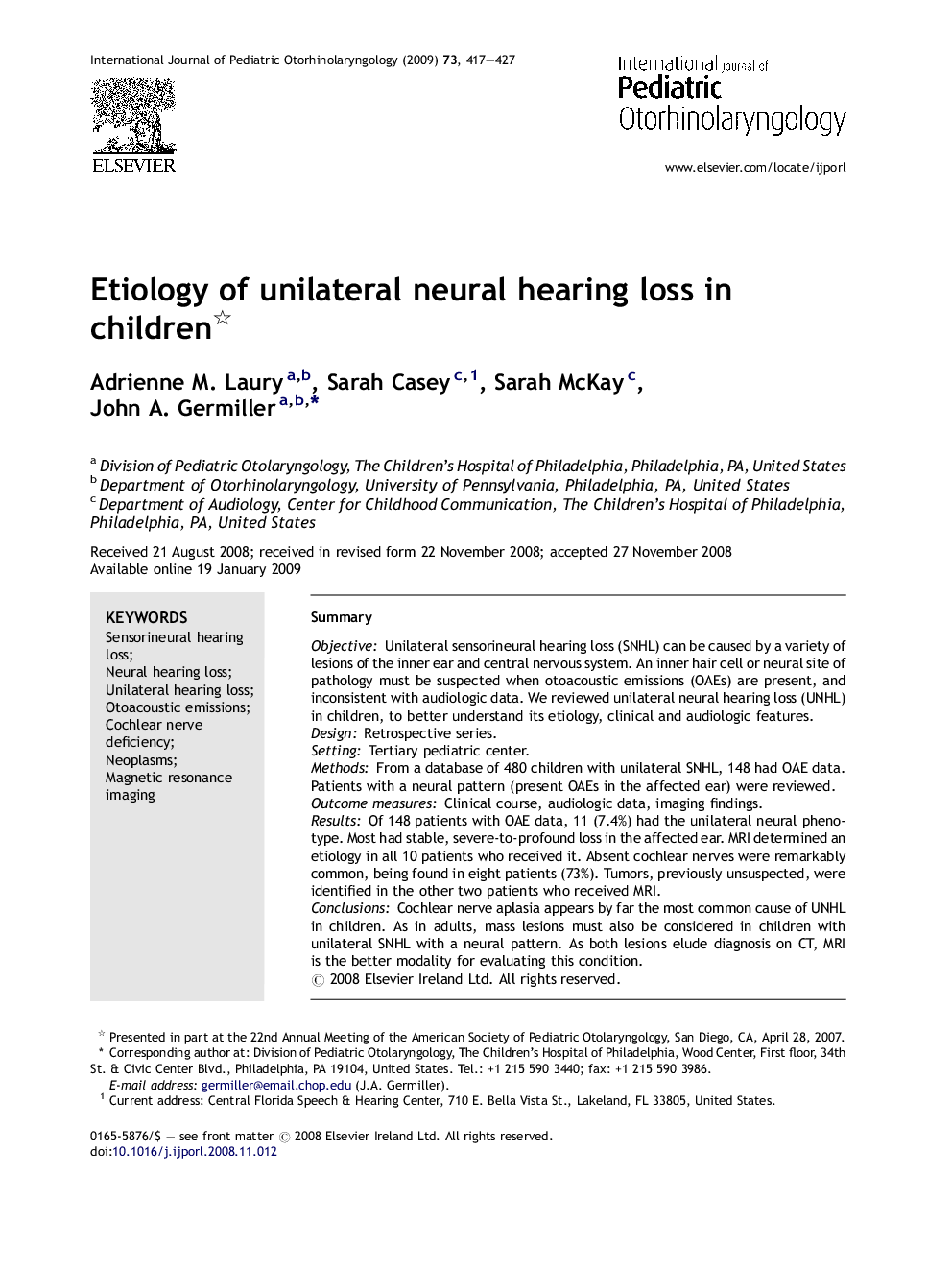| Article ID | Journal | Published Year | Pages | File Type |
|---|---|---|---|---|
| 4114013 | International Journal of Pediatric Otorhinolaryngology | 2009 | 11 Pages |
SummaryObjectiveUnilateral sensorineural hearing loss (SNHL) can be caused by a variety of lesions of the inner ear and central nervous system. An inner hair cell or neural site of pathology must be suspected when otoacoustic emissions (OAEs) are present, and inconsistent with audiologic data. We reviewed unilateral neural hearing loss (UNHL) in children, to better understand its etiology, clinical and audiologic features.DesignRetrospective series.SettingTertiary pediatric center.MethodsFrom a database of 480 children with unilateral SNHL, 148 had OAE data. Patients with a neural pattern (present OAEs in the affected ear) were reviewed.Outcome measuresClinical course, audiologic data, imaging findings.ResultsOf 148 patients with OAE data, 11 (7.4%) had the unilateral neural phenotype. Most had stable, severe-to-profound loss in the affected ear. MRI determined an etiology in all 10 patients who received it. Absent cochlear nerves were remarkably common, being found in eight patients (73%). Tumors, previously unsuspected, were identified in the other two patients who received MRI.ConclusionsCochlear nerve aplasia appears by far the most common cause of UNHL in children. As in adults, mass lesions must also be considered in children with unilateral SNHL with a neural pattern. As both lesions elude diagnosis on CT, MRI is the better modality for evaluating this condition.
